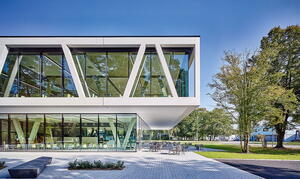HTS workshop for future fusion applications
25 Mar 2011
-
Sabina Griffith
In order to achieve superconductivity, the niobium-titanium (NbTi) and niobium-tin (Nb3Sn) conductors inside ITER's magnets will have to be cooled down with supercritical helium in the temperature range of 4 Kelvin (-269°C)—a process that requires substantial amounts of energy that impact the net energy gain. The efficiency of future fusion power plants could be drastically increased if superconductors could be operated at higher temperatures (> 65 K) using affordable liquid nitrogen, for example, instead of supercritical helium as coolant.
"Targeting a future commercial fusion machine, it may be very demanding to avoid liquid helium cooling for the coil system," Walter Fietz from the Karlsruhe Institute of Technology (KIT) in Germany writes in an article for Fusion Engineering and Design. "This would require less refrigeration power and allow omitting the radiation shield of the coils, resulting in a less complex cryostat and a size reduction of the machine."
"Having a material at hand that can transport currents without losses, that would be a dream," says Jean-Luc Duchateau from CEA who developed the superconducting tokamak Tore Supra. There are many materials being tested in labs around the world. At KIT in Karlsruhe, scientists have been experimenting for many years with a material that holds all the promises for successful application in the harsh environment of a fusion reactor: Yttrium Barium Copper Oxide, a crystalline chemical compound abbreviated as "YBCO". The material's operating temperature is in the range of around 50 K and its physical behavior in high magnetic fields brings it very close to Jean-Luc Duchateau's dream come true. The downside, however, is that so far it has not been possible to produce reliable strands out of YBCO.
In order to coordinate international efforts, a workshop is being organized at KIT on 26-27 May to further investigate options of HTS for high current and high fields for DEMO and future fusion applications. The workshop's flyer can be downloaded here .
In order to coordinate international efforts, a workshop is being organized at KIT on 26-27 May to further investigate options of HTS for high current and high fields for DEMO and future fusion applications. The workshop's flyer can be downloaded here .


